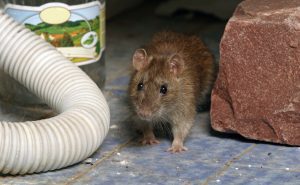To reduce the risk of deer mouse infestations, homeowners should adopt a multi-faceted approach focusing on exclusion, sanitation, and habitat modification. Seal cracks and openings in the home’s exterior, including areas where utility lines enter, to prevent mice from gaining entry. Steel wool or wire mesh should be used for sealing, as these materials are complex for mice to chew through. Keep outdoor vegetation trimmed and away from the house to reduce shelter and nesting sites for deer mice. Store firewood at least 20 feet from the home and keep it off the ground. Ensure attics, basements, and crawl spaces are well-ventilated and dry, reducing the appeal of these areas to deer mice looking for nesting sites. Regularly dispose of trash in sealed containers and remove any food or water sources by keeping food in rodent-proof containers and fixing leaky faucets or pipes. Regular cleaning and decluttering inside the home eliminate potential nesting sites and reduce hiding spots for mice. Consider using traps where mice activity is suspected, but always follow local guidelines and humane practices for wildlife control. By making the environment less inviting, homeowners can significantly reduce the likelihood of deer mouse infestations and the associated health risks.







